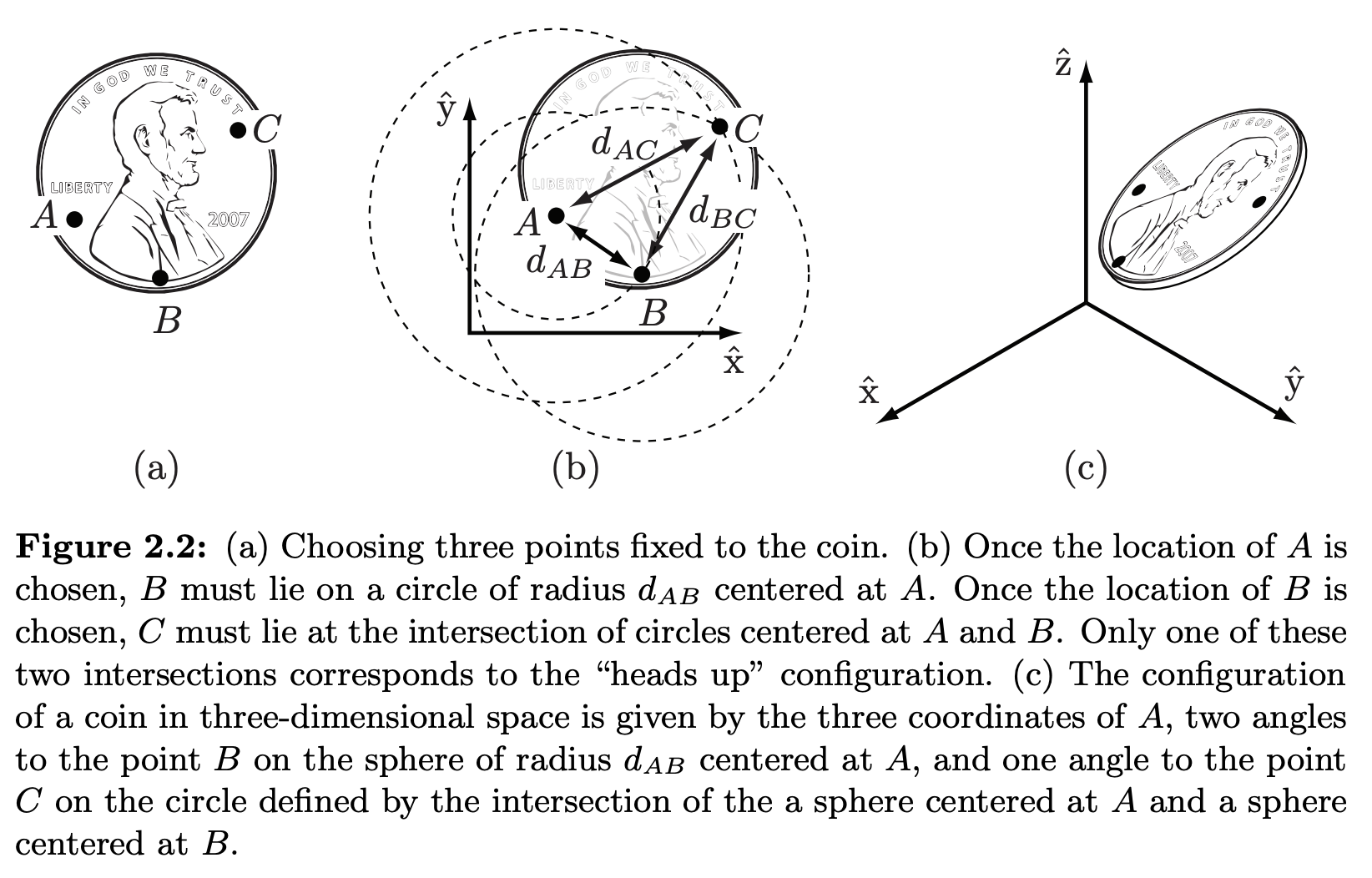Definition: Degrees of Freedom (DOF)
Smallest number of real-valued coordinates needed to represent configuration.
- Ex. Configuration of a door can be represented by a single representing the hinge angle
- 1 DOF
- Ex. Configuration of a point on a plane can be represented by
- 2 DOF
- Ex. Configuration of a coin lying on a plane can be represented by for location & orientation
- 3 DOF + 1 discrete variable representing which side is facing up
General rule for determining the number of DOF of a system:
This can also be expressed in terms of the number of variables and independent equations that describe the system:
A rigid body in 3D space (spatial rigid body) has 6 DOF. A rigid body in 2D space (planar rigid body) has 3 DOF. In terms of rigid bodies, we can express the above equations as:
Example: DOF Calculation with Coins
Let’s continue with the example of a coin lying on the table:
- Choose 3 points .
- For a coordinate frame is used to describe the plane, the positions of these points in the , , and .
- If the points could be placed anywhere on the plane, the coin would have 6 DOF (two for each of the three points).
- However, the coins are a rigid body, so the distance between point and () is always constant regardless of where the coin is.
- , and must be constrained too:
- Keeping these constraints in mind, we can find the DOF of the coin on the table.
- First choosing the position of point , we can choose it to be any point we want .
- We is specified, restricts the choice of point to those points on the circle of radius centered at .
- A point on this circle can be specified by a single parameter – , the angle specifying the location of B on the circle centered at .
- We can define it to be the angle that the vector makes with the -axis. >- Once we have chosen , there are only two possible locations for – at the intersections of the circle of radius centered at and the circle of radius centered at . > - These two locations correspond to heads/tails. >- Thus, once , , and heads/tails has been chosen, the constraint of and eliminate the apparent freedoms provided by , fixing the location of C. >- Thus, the coin only has 3 DOF specified by .
- Suppose we want to specify a 4th point on the coin.
- This introduces constraints .
- One of these constraints is redundant – only 2 can be independent.
- The two freedoms apparently introduced by are then immediately eliminated by these two independent constraints.
- The same would be true for any other point we want to add so there is no need to consider additional points
